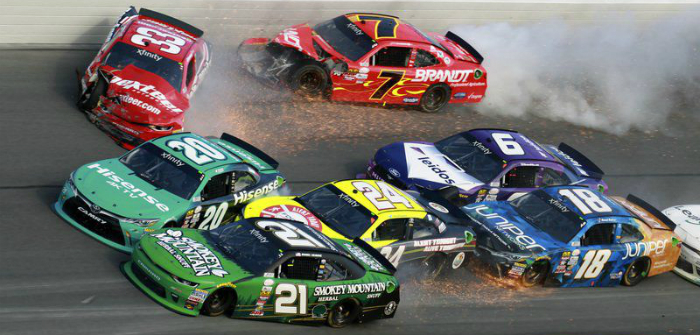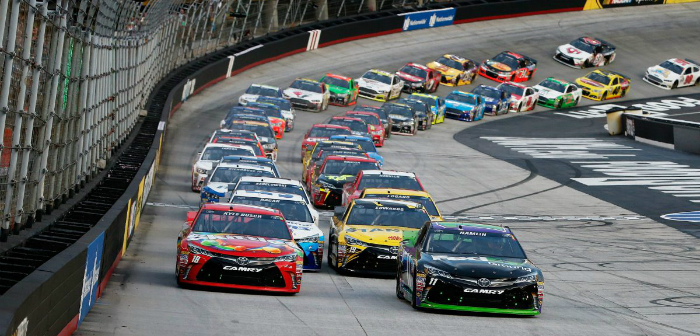 Watch a NASCAR race today and you’ll see safety advancements everywhere. The walls lining the track are covered in SAFER (steel and foam energy reduction) barrier. The barrier goes unnoticed by many – until a car smashes into the wall at full speed.
Watch a NASCAR race today and you’ll see safety advancements everywhere. The walls lining the track are covered in SAFER (steel and foam energy reduction) barrier. The barrier goes unnoticed by many – until a car smashes into the wall at full speed.
This is just one example. Safety measures such as the stronger, safer EVP chassis currently used on superspeedways and expected to eventually be mandatory at all venues and the strengthened footbox area that provides additional protection to a driver’s lower extremities are more difficult to see, hidden underneath and inside the sheet metal surrounding the vehicle. But they’re there nonetheless.
The average fan sees a crewman pull a tear-off from the windshield of a car during a pit stop but probably don’t realize the windshield is made of a laminate material that’s been mandatory for use at all tracks for the Monster Energy NASCAR Cup Series since 2013.
Recent years have seen the focus turn more to the inside of the car and the driver compartment, but officials will never stop looking for ways to make the sport safer for everyone inside and outside of the car.
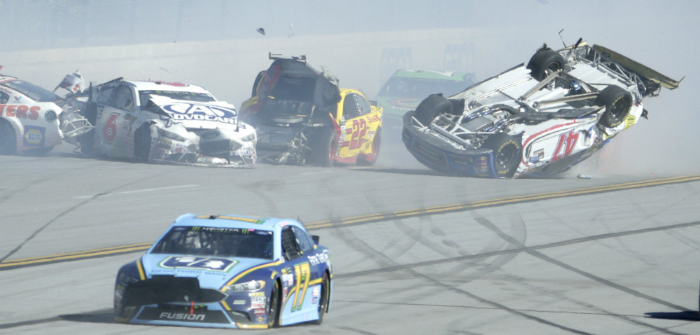
“That’s really a never-ending process for us,” explains John Patalak, director of Safety Engineering for NASCAR. “Sometimes we have opportunities to be proactive, like the laminate windshield. That wasn’t necessarily tied to one specific incident where we were responding to an injury or an issue, but it was an opportunity we saw and realized that with the technology we have available to us we could make that part better and safer.
“From internal discussion among our group, an idea from the race teams, the driver, things we have observed. Sometimes it’s just things we see, hypothetical scenarios we create and say, ‘Wow, if that had gone a little differently – let’s look at that and see how we can make it better.'”
Other projects were the direct result of on-track incidents. Former series champion Kyle Busch missed the first 11 races of 2015 after suffering a compound fracture of his lower right leg and a mid-foot fracture of his left foot in a crash while competing in an XFINITY Series race.
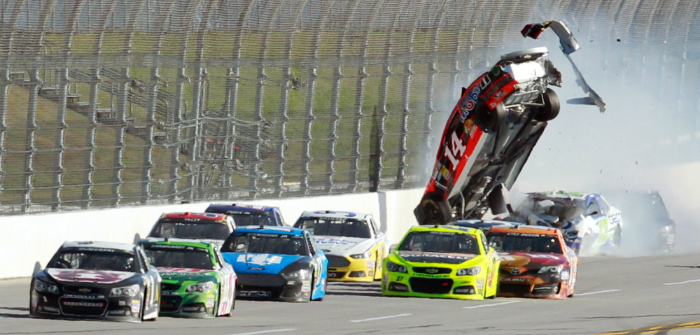
That led to a closer look at the inside area of the driver compartment below the seat in what’s known as the footbox area.
“We were able to add toe board foam, an energy-absorbing foam, to the toe board and that reduced loads into the lower legs, ankles and knees of drivers during a frontal impact,” Patalak states.
While NASCAR’s safety team has grown in numbers in recent years, officials look to others outside the sport for guidance when necessary and to gather opinions from those not working inside the sport.
“We have a group of expert consultants, with a great level of experience, education and background in protecting humans during crashes,” Patalak continues. “We will bounce ideas off them, we will use them to evaluate new head-and-neck restraints, we use their input as a fresh set of eyes on our data and conclusions to make sure we’re not missing anything, to make sure we’re going down the right road and really to help us ask the right questions or test the right things to make sure we are doing no harm. Sometimes we come up with a conclusion and it may be better for that exact, specific scenario but it’s important to evaluate it against all scenarios to make sure we’re not creating a hazard somewhere else that we would be unaware of.”
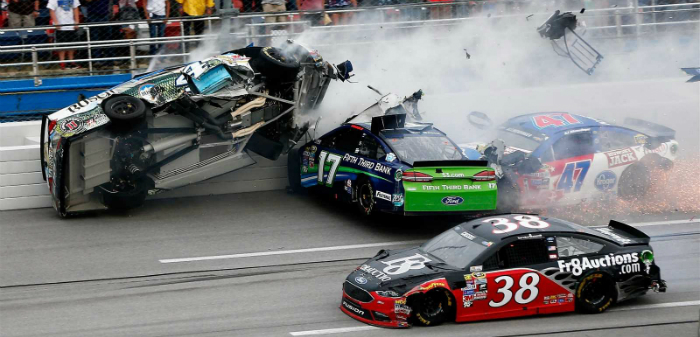 NASCAR’s at-track safety effort on the competition front is led by former racer David Green. His group’s job doesn’t begin when there’s an on-track accident. It starts days before, when the cars first roll off transporters and begin the inspection process.
NASCAR’s at-track safety effort on the competition front is led by former racer David Green. His group’s job doesn’t begin when there’s an on-track accident. It starts days before, when the cars first roll off transporters and begin the inspection process.
Headrests and seat belts, HANS devices and the seats, themselves, all have to meet SFI specifications and those are checked by safety officials going into the race weekend. How are the belts installed, what type of restraint system is being used, what is the angle of the seat? Everything is noted and can be helpful afterward should the car be involved in an accident.
Each car is also outfitted with an IDR (incident data recorder) that will record specific information should the car exceed a predetermined impact threshold in a crash.
Green, Safety Manager for NASCAR, watches each race from a trailer in the infield. One TV screen shows the live feed as the race unfolds; a second carries the TV feed, which typically runs 5-7 seconds behind the live action. He also has a scanner that keeps him in radio contact with officials in the tower and those along pit road as well as other emergency personnel.
When an accident occurs, Green and his group will typically see it unfold via the live feed, take initial notes, then see it again seconds later on the TV feed.
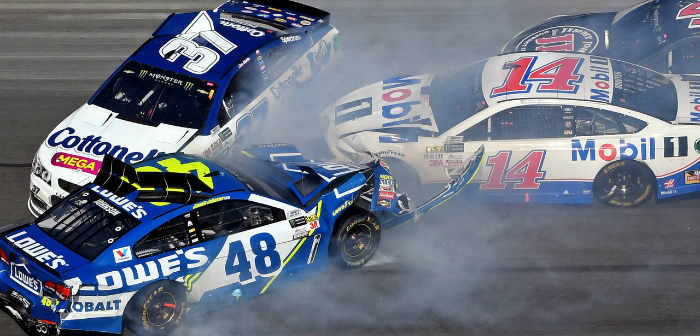
“That gives us kind of a baseline of what we’re going to look at out in the garage,” Green states. “I try to have an idea when I leave the trailer to what cars I’m looking at first, second, third if it’s a multi-car wreck. The impact as I see it on TV, that would weigh in a little bit on maybe some things I look into on the car.”
Once the car has arrived back in the garage, photos of the vehicle will be taken, a minimum of nine and as many as 50.
“But the nine are our baseline,” Green explains. “That’s what we call the overview and includes the door number, primary damage, right front into the wall for example, secondary damage, right rear in the wall maybe, and a third area if maybe it bounced off the wall and hit another car or was hit by another car.
“And then we go directly inside the car. We look at headrest, we look at foot well, gas pedal area, brake pedal area, seat mounting. We put the seat belts back together as if the driver is sitting in the car. We see brand (of belts), any trends on belt mounting, whether it’s a seven- or nine-point belt system.
“Finally we get photos of the inside from the headrest area, looking down at the dash. With the steering wheel on, with it off. On a hard right-front (impact) you see movement of stuff to the right. The knee knocker that protects his knees is to the right.
“All this stuff is common in a big hit but it reassures us that some of the things we’re doing and how we inspect it is the right manner.”
The information on the IDRs can be crucial, but Green said the pieces are often the last thing his team checks. If the light on the IDR is flashing, the impact has exceeded the pre-determined threshold and that data will need to be included in the report that will be filed and sent back to Patalak.
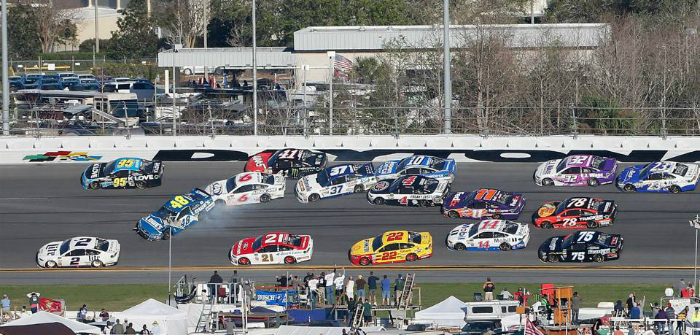
No wreck is categorized as minor or major, Green said, adding that ‘they’re all significant’. “We’ll let the data seek its path and show John what he needs to know (with our reports).”
The goal is to stay ahead of the curve with safety always in front of competition. If everything inside the car works as it’s designed, is there anything left to be done one the safety front?
“That means (everyone) has done a great job, absolutely,” Green concludes. “But it also tells me we need to start looking a little deeper because as (NASCAR Chairman and CEO) Brian France said, ‘Without safety, we have nothing.’ I know that’s our motto as well. I’ve been very proud of what John has created here; it’s been an awesome opportunity to work with and learn from him.”


